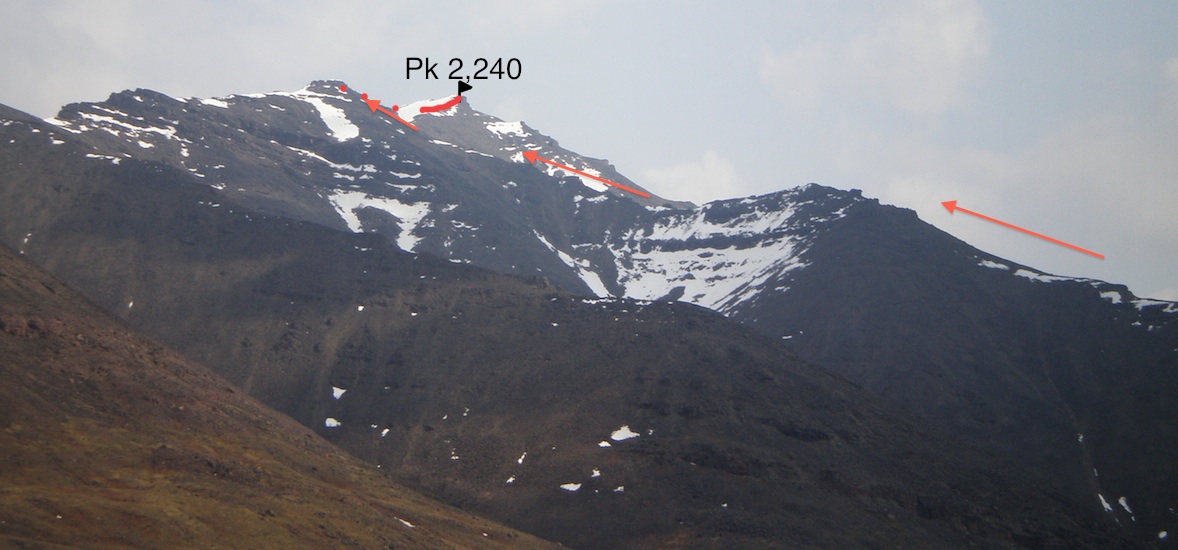Peak 2,240m, First Ascent and Exploration
United States, Alaska, Brooks Range
 Due to lower elevations and poor rock quality, the Brooks Range does not attract a lot of attention. Doug Piehl and I were drawn to the range’s remoteness and lack of other climbers. We focused on an area on the northern edge of the Endicott Mountains where, to the best of my research abilities, none of the mountains had been climbed. The area is mostly uninhabited, but archeological sites dot the area and wildlife abounds, most notably the huge caribou herds. Almost immediately after landing along the Killik River, a lone wolf ambled through our camp.
Due to lower elevations and poor rock quality, the Brooks Range does not attract a lot of attention. Doug Piehl and I were drawn to the range’s remoteness and lack of other climbers. We focused on an area on the northern edge of the Endicott Mountains where, to the best of my research abilities, none of the mountains had been climbed. The area is mostly uninhabited, but archeological sites dot the area and wildlife abounds, most notably the huge caribou herds. Almost immediately after landing along the Killik River, a lone wolf ambled through our camp.
On the morning of June 3, we left base camp for Peak 2,240m, the third most prominent peak in the Brooks Range [Topographic prominence, behind Mts. Chamberlin and Igikpak. Peak elevations in meters, as per USGS maps for the Brooks Range—Ed.]. We first scrambled over a ridge and up an easy peak (approximately 68° 14' 30" N, 153° 48' W; 7,191' on our altimeter, and 6,824' based on converting the map contours), then scampered down scree on the east side of the ridge to the valley of the West Branch of the West Fork Okpikruak River. To reach Peak 2,240m we trekked downriver and around a group of mountains, then a short ways back up the East Branch. An easy river crossing took us to the 3,435' base (altimeter reading) of Peak 2,240m, seven hours after leaving camp. We began climbing the southernmost of three buttresses leading to the northwest ridge, encountering 3rd- and 4th-class terrain with a few spots of easy 5th (5.1-5.3). A thunderstorm, complete with lightning, slowed our progress to the main northwest ridge. Eventually an easy hike led to the summit (7,529' altimeter, 68° 17' N, 153° 33' W), for what we believe is the first ascent. The nights rain turned our return river crossing—easy only 10 hours earlier—into a dangerous challenge. We returned to base camp 34.5 hours after leaving.
While Peak 2,240m doesn’t offer much climbing, our scouting gave us a close-up of Peak 2,220m North, which we also attempted. The terrain was mostly 3rd-class scree, and we stayed along the ridge to about 6,500' where we met a tricky cornice in a col and deteriorating conditions, and we retreated. This mountain, with its several peaks, offers the best climbing in the area with several potential 5th-class routes on near-vertical rock. A badly sprained ankle prevented us from another attempt.
Erik Peterson





